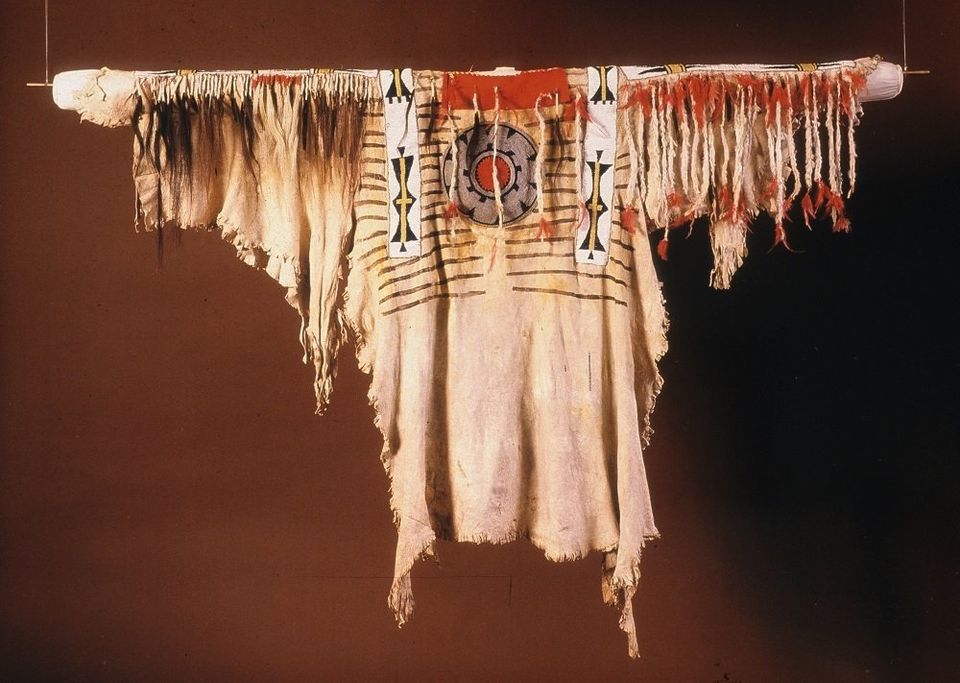Cultural Restitution
SHARE ARTICLE
After assurances from the Siksika Tribal Council about the future ownership and long-term preservation of regalia that once belonged to Chief Crowfoot, an important late 19th century Blackfoot leader, Exeter City Council finally voted yesterday to repatriate this regalia to the Siksika Nation in southern Alberta.
Repatriation discussions are often multifaceted. But Exeter’s Royal Albert Memorial Museum (RAMM) and City Council have shown an exemplary skill in due diligence and judgement while navigating a sensitive appeal for repatriation.
There were some earlier this year who felt the Museum was dragging its feet and were resisting the regalia’s return. But this concern has proven to be unwarranted.
The entire process has taken five years. It was 2015 when the Blackfoot Crossing Historical Park made their first request for the repatriation of the ‘Crowfoot regalia’. But matters accelerated in January this year after the Exeter Museum decided to act on concerns they had about returning the regalia to the Blackfoot Crossing Historical Park, a museum that's never been accredited with the Canadian Museums Association.
The RAMM switched their focus onto Chief Ouray Crowfoot, the current Chief at Siksika Nation. The Exeter Museum felt the Siksika Nation could provide the clarification necessary about the regalia's longer-term care and preservation before agreeing its future ownership and destination.
Those conditions have now been met. As a result, Chief Crowfoot confirmed to the RAMM that the Siksika Tribal Council will take future ownership of the regalia, while the Blackfoot Crossing Historical Park will become ‘care takers’, displaying the objects on the basis of a long-term loan.
The success of this initiative by the RAMM has cleared the way for Exeter City Council’s Executive Committee to address the issue of repatriation three months earlier than expected.
“When considering the claim for repatriation, the council recognised that the original injustices still reverberate today with First Nation Canadians,” explained Cllr Rachel Sutton, Exeter Council’s Portfolio Holder for Climate and Culture. “Giving back Crowfoot’s regalia returns control to the Siksika Nation over their cultural identity, dignity and authority and is the right thing to do.”
The ‘Crowfoot regalia’, comprising Chief Crowfoot’s buckskin shirt, a pair of leggings, a knife with feather bundle, two beaded bags and a horsewhip, was acquired directly from Chief Crowfoot by Cecil Denny. Denny was a signatory to the signing of Treaty 7 in Alberta (September 1877), an act which all parties believed would help protect Blackfoot lands and their traditional ways of life.
The regalia was first loaned to the RAMM by Denny’s sister in 1878, before being purchased by the Museum in 1904.
As a result of a persistent failure by Canadian administrations to honour the terms of Treaty 7, the Blackfoot people have suffered both economically and socially. It is hoped that repatriation of the Crowfoot regalia to its true owners will help educate a wider number of people about their significance in terms of global history.
“The returning of this regalia will contribute to healing and reconciliation,” added Chief Crowfoot. “The Great Chief’s spirit can rest easy once all his belongings are gathered from the four corners of Mother Earth and returned back to his home".
An official ceremony to hand over the regalia will take place in Exeter after COVID-19 restrictions have been lifted.
Photo: The Royal Albert Memorial Museum, Exeter
Both Photos Courtesy of © 2020 Royal Albert Memorial Museum & Art Gallery, Exeter City Council
COMMENT
Julia Dover (08 August 2020)
The wealth of knowledge, detail and sheer storytelling power of your website amazes. As global awareness of the issues around restitution and decolonisation arises, you offer a singularly important platform. I would also suggest your timing is brilliant.
I learned of your website through your article on the return of Chief Crowfoot's belongings.
Events surrounding the return have been covered differently in the British and Canadian press. In addition, I see the (delayed) handover of Crowfoot's belongings, with its rituals and symbolic potency (indeed, such ceremonies in general) as an opportunity in itself to balance the nature of the relationships, as well as to seed positive, creative new conversations in Britain about her own identity. Restitution of objects is not just about making amends with formerly colonised peoples; it's also about addressing shadows closer to home that call for their own healing.
More News




